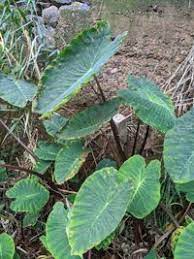Cocoyam cataphylls refer to specialized leaf structures found in cocoyam plants, also known as taro or dasheen. Cocoyam is a group of root vegetables widely cultivated and consumed in various parts of the world, particularly in tropical and subtropical regions.
Cataphylls are modified leaves that serve specific functions for the plant. In the case of cocoyam, cataphylls play a crucial role in protecting the emerging shoot or leaf bud and aiding in the growth and development of the plant. These specialized leaves typically envelop and shield the new shoot until it’s ready to emerge and grow.
Cataphylls are often thick, fleshy, and protective, helping cocoyam plants withstand environmental stress and potential damage during early growth stages. They also provide nutrients and support to the emerging shoot as it starts to grow.
The Economic Importance and Uses of Cocoyam Cataphylls

Cocoyam cataphylls, also known as the leaves of the cocoyam plant, are a valuable component of this plant with several economic and practical uses. Cocoyam, scientifically known as Xanthosoma sagittifolium, is a tropical root crop widely cultivated and consumed in various parts of the world. The cataphylls, or leaves, play a significant role in the economic aspects and practical applications of the cocoyam plant.
Here are some of the economic importance and uses of cocoyam cataphylls:
1. Food source: Cocoyam cataphylls are an important source of nutrition and are consumed as a vegetable in many cultures. The leaves are rich in essential nutrients such as vitamins (e.g., vitamin A, vitamin C), minerals (e.g., iron, calcium), and dietary fiber. They are often used in various traditional and modern dishes, contributing to a balanced diet.
2. Income generation: Farmers and agricultural enterprises can generate income by selling cocoyam cataphylls in local markets or to wholesalers. The demand for fresh or processed cocoyam leaves provides economic opportunities for individuals and communities engaged in cocoyam cultivation.
3. Export potential: In regions where cocoyam cataphylls are a staple vegetable, there is the potential for export to international markets, contributing to foreign exchange earnings. Countries with a significant cocoyam cultivation base can tap into the global demand for exotic vegetables and generate export revenue.
4. Culinary and culinary innovation: Cocoyam cataphylls are versatile and can be used in a variety of dishes. They are often used in soups, stews, stir-fries, and salads, enhancing the taste and nutritional value of meals. Chefs and culinary enthusiasts can experiment with cocoyam leaves to create innovative and appealing recipes.
5. Medicinal uses: Cocoyam cataphylls possess certain medicinal properties and are used in traditional medicine to treat ailments such as diarrhea, wounds, and respiratory issues. The leaves are believed to have potential anti-inflammatory and antimicrobial properties, making them valuable in traditional healing practices.
6. Livestock feed: Cocoyam cataphylls can serve as nutritious fodder for livestock, including poultry and cattle. Farmers often utilize surplus or damaged leaves to feed their animals, reducing feed costs and improving the overall health and productivity of their livestock.
7. Soil improvement and composting: Cocoyam cataphylls can be used to improve soil fertility through composting. They are rich in organic matter and nutrients, making them an excellent material for creating nutrient-rich compost that enhances soil structure, fertility, and overall plant growth.
Read Also: Dates Drupe: Economic Importance, Uses and By-Products
8. Erosion control and landscaping: Cocoyam cataphylls can be utilized in landscaping and erosion control projects. Their broad leaves and sturdy stems can help prevent soil erosion, making them a valuable asset in landscaping efforts to maintain the stability of slopes and embankments.
The Products and By-products That Can Be Derived From Cocoyam Cataphylls
Cocoyam cataphylls, which are protective sheaths or leaves that cover the corms of the cocoyam plant, can be utilized to derive various products and by-products. Cocoyam, also known as taro or dasheen, is a starchy root vegetable widely consumed in many parts of the world.
Here are some of the products and by-products that can be derived from cocoyam cataphylls:
1. Compost or Organic Fertilizer: Cocoyam cataphylls can be composted along with other organic materials to create nutrient-rich compost or organic fertilizer. The decomposed cataphylls contribute essential nutrients to the soil, promoting healthy plant growth.
2. Livestock Feed: Dried and ground cocoyam cataphylls can be used as a component in livestock feed. They provide additional nutrition to animals and can be particularly beneficial for ruminants and non-ruminants.
3. Mulch: Cataphylls can be shredded or chopped and used as mulch to cover the soil around plants. Mulching helps retain soil moisture, suppress weeds, and improve soil structure.
4. Biodegradable Packaging Material: The fibrous nature of cocoyam cataphylls can be processed into biodegradable packaging material. This sustainable alternative can help reduce the use of plastic and other non-biodegradable materials.
5. Paper Products: The fibers from cocoyam cataphylls can be used to produce paper or paper products such as trays, plates, or napkins. This can be an eco-friendly approach to utilizing the plant waste.
6. Natural Dyes: Extracts from cocoyam cataphylls can be used as a source of natural dyes for fabric and crafts. The leaves may contain compounds that can impart colors ranging from greens to blues.
7. Biofuel Production: Cataphylls can be processed to extract starch, which can then be converted into biofuel through fermentation or other processing methods. This can be a potential renewable energy source.
8. Medicinal Extracts: Cocoyam cataphylls may contain bioactive compounds with potential medicinal properties. Extracts from these cataphylls can be used in traditional medicine or in the development of pharmaceuticals.
9. Culinary Use: While not a by-product, cocoyam cataphylls can also be consumed as a vegetable. They can be used in traditional dishes, soups, or stews, especially in some African and Asian cuisines.
In conclusion, cocoyam cataphylls offer several economic benefits and practical applications, ranging from being a valuable food source and income generator to playing roles in traditional medicine, livestock feed, and soil improvement. These varied uses contribute to the overall economic importance and sustainability of cocoyam cultivation and utilization.
Read Also: Benefits of Passion Flowers

